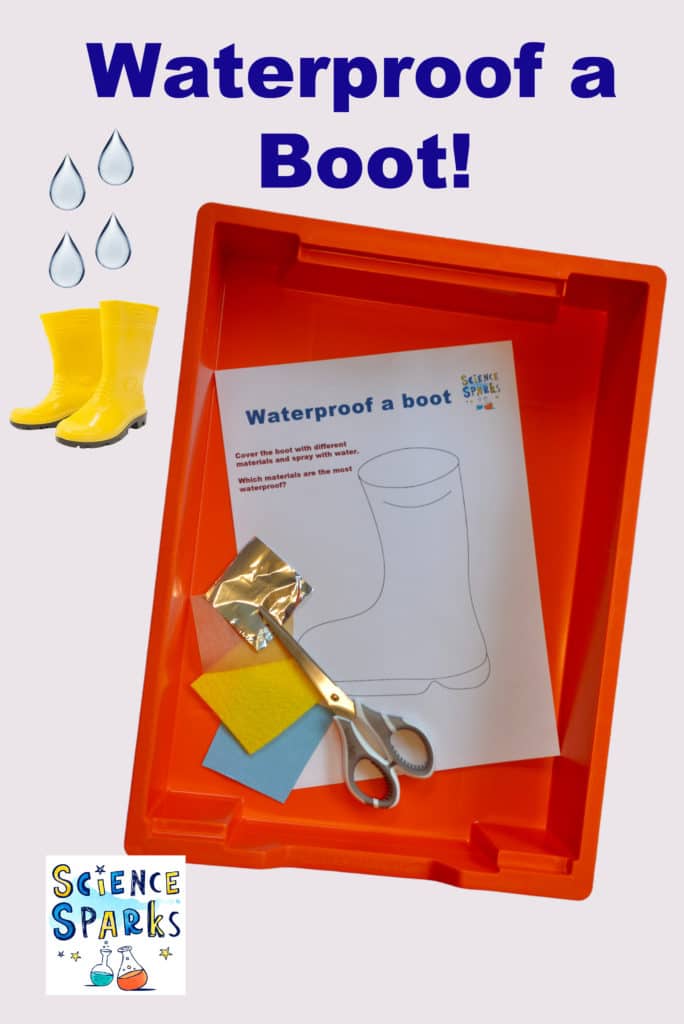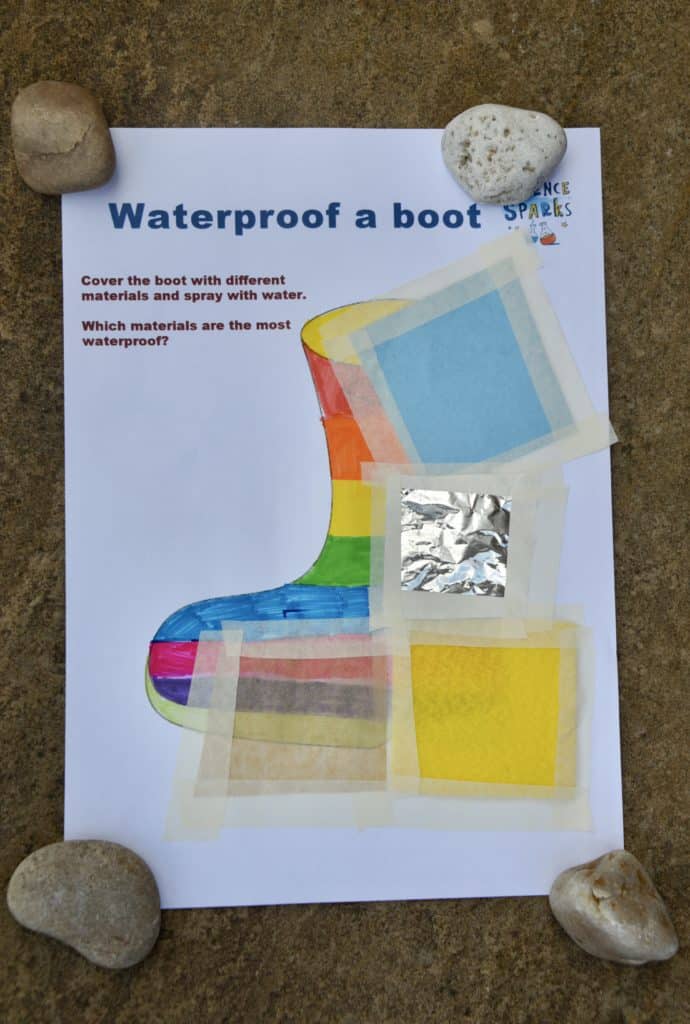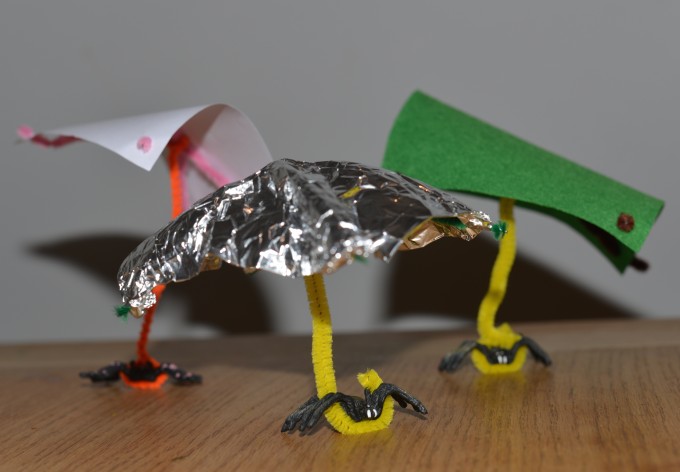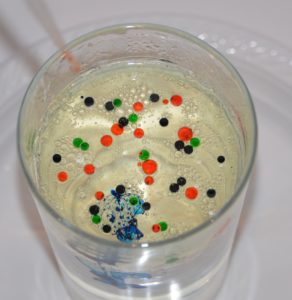Today’s science investigation is a fun one! We’re going to waterproof a boot – not a real one, as hopefully your boots are already quite waterproof, but a paper one! The idea is to print off the sheet, colour it in, cover it with different materials and then spray it with water to find out which materials are the most waterproof!

Which materials are the most waterproof?
What you’ll need
Felt tip pens
Different materials to test – kitchen foil, paper, cloth, felt, wax crayon etc
Masking tape
Scissors
Boot Printable – or draw your own pictures
Water sprayer, or you can drip the water over the top using your fingers

INSTRUCTIONS
Colour in the boot with felt tip pens. Make it as crazy or as simple as you like.
Next, ask an adult to help you cut out small squares of the different materials.
Spend some time feeling and looking at the different materials. Which do you think will be the most waterproof? It might help to think about what each is used for.
Carefully tape the squares of material over the boot until the whole boot is covered.
Spray the boot evenly with water.
Look at the surface of each material. Do they look different? If the material is waterproof, the water will be visible in beads on the surface.
Carefully peel off the squares of different materials to check if the colours are wet.
Check to see which material is the most waterproof.
How can you tell if a material is waterproof?
Water will usually form beads on top of a waterproof material and be absorbed by a non-waterproof material.
The colouring under the waterproof materials should stay dry.
Extension tasks
Use your findings to design and create a sandwich bag that will keep a sandwich dry on a wet day.
If you enjoyed this, I also have a dinosaur waterproofing experiment!
More science experiments for kids
Design and build an umbrella for Incy Wincy Spider. This is a great activity for thinking about whether a material is waterproof and properties such as flexibility.

Find out why oil and water don’t mix with these easy investigations.

Experiment to find out why some objects float and some sink.
Learn more about materials and their properties with my huge collection of materials experiments.
Don’t forget to check out my FREE science experiment instruction sheets, too!
Last Updated on June 17, 2024 by Emma Vanstone

Leave a Reply